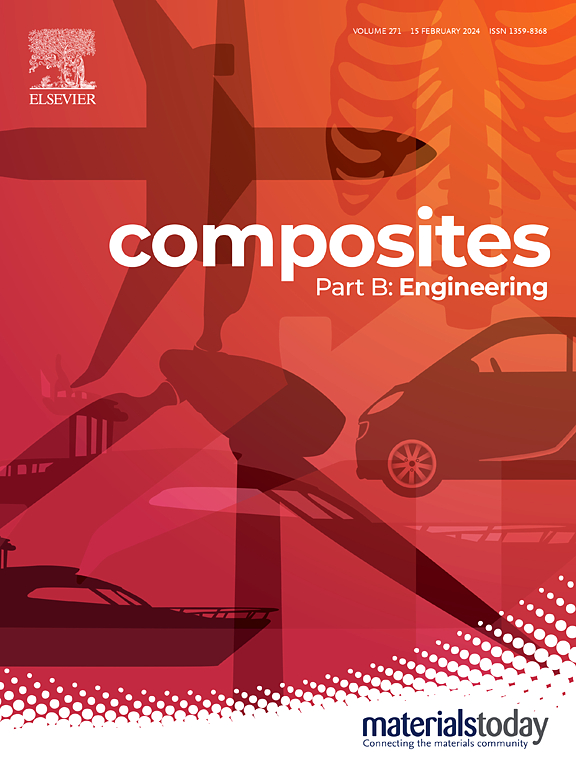拉伸,感知和创新:下一代应变传感器的进展
IF 12.7
1区 材料科学
Q1 ENGINEERING, MULTIDISCIPLINARY
引用次数: 0
摘要
可穿戴技术的快速发展,与工业4.0的数字化转型和工业6.0的新兴范式相一致,加速了智能应变传感器的发展。基于聚合物复合材料的应变传感器具有将机械变形转化为电信号的能力,具有高灵敏度和对动态环境的适应性,引起了人们的广泛关注。尽管已经取得了相当大的进展,但应变传感器仍面临着一些挑战,如平衡对拉伸性的敏感性、纳米材料的分散性差以及有限的耐用性。环境敏感性、界面粘附性和高制造成本阻碍了它们的可扩展性和性能。可穿戴应变传感器仍处于原型阶段,必须解决开发集成、多功能应变传感器的各种障碍。本文综述了基于聚合物的应变传感器的基本传感原理、结构创新、关键设计参数和多功能特性,包括热管理、电磁干扰屏蔽和疏水性。最后,探讨了用于可穿戴智能设备和电子皮肤的多功能应变传感器的发展面临的挑战和前景。这篇综述不仅阐述了当前最先进的基于聚合物的可穿戴应变传感器技术,还展望了未来的发展方向,促进了数字健康的变革。本文章由计算机程序翻译,如有差异,请以英文原文为准。

Stretch, sense, and innovate: Advances in next-generation strain sensors
The rapid proliferation of wearable technology, aligned with the digital transformation of Industry 4.0 and the emerging paradigm of Industry 6.0, has accelerated the development of intelligent strain sensors. Polymer composite-based strain sensors have attracted significant attention for their ability to convert mechanical deformation into electrical signals with high sensitivity and adaptability to dynamic environments. Although considerable progress has been achieved, strain sensors face challenges such as balancing sensitivity to stretchability, poor dispersion of nanomaterials, and limited durability. Environmental sensitivity, interfacial adhesion, and high fabrication costs hinder their scalability and performance. Wearable strain sensors are still in the prototype stage, and various obstacles in developing integrated and multifunctional strain sensors must be addressed. This review aims to consolidate the fundamental sensing principles, structural innovations, critical design parameters, and multifunctional properties, including thermal management, EMI shielding, and hydrophobicity of polymer-based strain sensors. Finally, the prevailing challenges and prospects in advancing multifunctional strain sensors for wearable smart gadgets and electronic skin are explored. This review not only elucidates the current state-of-the-art polymer-based wearable strain sensor technologies but also envisions future directions, catalyzing transformative advancements in digital health.
求助全文
通过发布文献求助,成功后即可免费获取论文全文。
去求助
来源期刊

Composites Part B: Engineering
工程技术-材料科学:复合
CiteScore
24.40
自引率
11.50%
发文量
784
审稿时长
21 days
期刊介绍:
Composites Part B: Engineering is a journal that publishes impactful research of high quality on composite materials. This research is supported by fundamental mechanics and materials science and engineering approaches. The targeted research can cover a wide range of length scales, ranging from nano to micro and meso, and even to the full product and structure level. The journal specifically focuses on engineering applications that involve high performance composites. These applications can range from low volume and high cost to high volume and low cost composite development.
The main goal of the journal is to provide a platform for the prompt publication of original and high quality research. The emphasis is on design, development, modeling, validation, and manufacturing of engineering details and concepts. The journal welcomes both basic research papers and proposals for review articles. Authors are encouraged to address challenges across various application areas. These areas include, but are not limited to, aerospace, automotive, and other surface transportation. The journal also covers energy-related applications, with a focus on renewable energy. Other application areas include infrastructure, off-shore and maritime projects, health care technology, and recreational products.
 求助内容:
求助内容: 应助结果提醒方式:
应助结果提醒方式:


